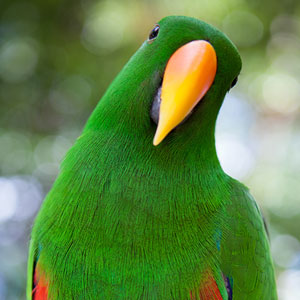
Bird Beak Problems
Birds use their beaks as a tool for a variety of uses. The beak plays a crucial role in eating, playing, and chewing, and is often used as an extra appendage during playing, exploring, and gripping. Because a bird's beak is crucial to his everyday routines, it is important to recognize the signs of a healthy versus unhealthy beak.
Healthy vs Unhealthy Beak Appearance
The appearance of a healthy beak should be smooth and symmetrical, plus the upper beak should align with the lower beak. It shouldn't have any discolored areas, peeling, or unusual textures.
Signs of an unhealthy beak include overgrowth, discoloration, a soft or rubbery texture, erosion, a crossed beak, swelling adjacent to the beak, abnormal grooves, and a shortened upper beak.
Causes of Beak Disorders
Problems with the beak can arise for a variety reasons, including trauma, disease, cancer, developmental conditions, nutritional deficiencies, and infection. A bird's beak is linked to other body systems, so a beak disorder can also affect other parts of the body. Your bird should be examined by an avian veterinarian if you see signs of an unhealthy beak.
Common Beak Disorders
Common beak disorders due to abnormal beak growth or development include an overgrown beak, a scissors beak, and a "parrot beak." Overgrowth can occur on the upper or lower beak, or it can appear only on one side of the beak. Most often, the upper beak overgrows the lower beak. A crossed beak is also referred to as a scissors beak, and it is often seen in cockatoos and macaws. This condition causes the upper beak to grow to one side of the lower beak. A "parrot beak," often see in cockatoos, causes the tip of the upper beak to rest inside or on the lower beak.
Birds can also develop cancer on their beaks, which can cause erosion, discoloration, and masses on a bird's beak. Nutritional deficiencies can also negatively affect the beak, leading to overgrowth, scaling, or a soft beak. Trauma to the beak can result in fractures and other wounds, often due to fighting between birds, flying into windows, or chewing on electrical cords.
Treatment will vary according to the underlying cause of the disorder. If the problem is caught early on and addressed immediately, there is a good chance of successful treatment.
Discover More!
How to Stop a Bird From BitingHow to Trim a Bird's Beak with a Dremel (Video)
The Benefits of Cuttlebone for Birds
Choosing Toys for Your Bird
Return to Bird Articles


